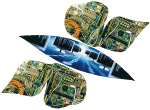Itinerari per l'alta formazione

Itinerari per l'alta formazione
IRCrES
Itinerari per l’alta formazione è una collana dei Volumi IRCrES per la didattica universitaria e terziaria. Gli Itinerari mettono rapidamente a disposizione degli studenti, della comunità scientifica e di un vasto pubblico testi finalizzati alla formazione.
6 objects
Itinerari per l'alta formazione
IRCrES
Itinerari per l’alta formazione è una collana dei Volumi IRCrES per la didattica universitaria e terziaria. Gli Itinerari mettono rapidamente a disposizione degli studenti, della comunità scientifica e di un vasto pubblico testi finalizzati alla formazione.
6 objects
6 objects
